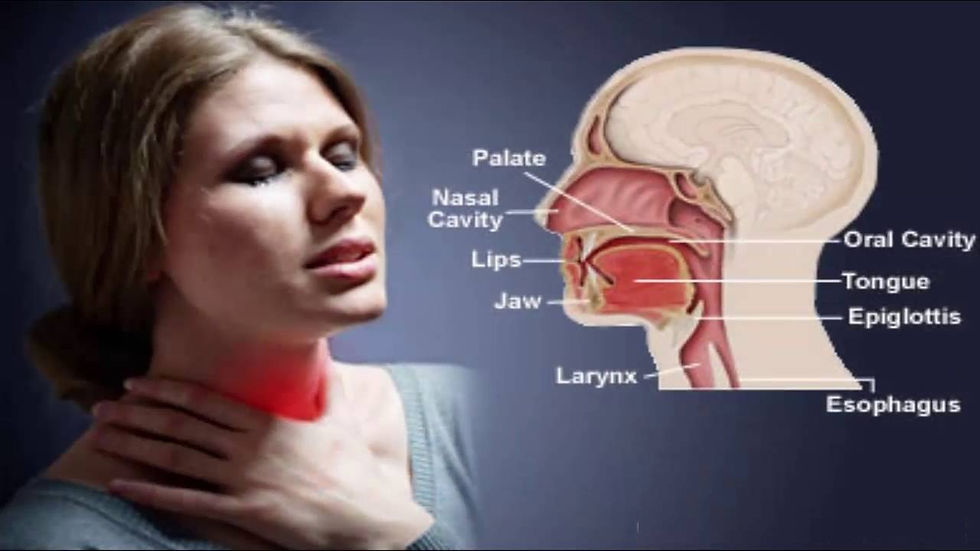GERD, Acid Reflux and Dysphagia
- Reflux MD
- Dec 27, 2018
- 2 min read
Updated: Dec 28, 2018

Acid Reflux and GERD
GERD or Gastroesophageal reflux disease occurs when the lower esophageal sphincter is not functioning leading to the stomach contents flowing back into the esophagus. In normal digestion, the LES or lower esophageal sphincter allows passage of food to the stomach but prevents backflows. The malfunctioning of LES leading to an acid reflux is the reason for GERD. The common acid reflux causes are usually related to diet and lifestyle. There are several risk factors that need to be considered.
1) Pregnancy
Women may experience acid reflux for the very first time during pregnancy. Increasing hormone levels and pressure from the growing fetus lead to acid reflux. It is most troublesome during the third semester but goes away after delivery.
2) Hiatal hernia
A hiatal hernia is a stomach abnormality and can occur at any age. When the lower esophageal sphincter and the upper part of the stomach move above the diaphragm, a hiatal hernia is created. The diaphragm is the wall of muscle that separates the stomach from the chest. In normal conditions, the diaphragm prevents acid from rising into the esophagus, but with a hiatal hernia, acid can move into the esophagus more easily.
3) Smoking
Smoking can damage mucus membranes, increase acid secretion and reduce LES function. It impairs muscle reflexes in the throat and reduces salivation. All of these are grounds or ideal conditions for acid reflux to occur.
4) Food
Large meals or lying down immediately after food trigger a reflux. Coffee, alcohol, citrus fruits, chocolate, tomatoes, aerated drinks, fatty and spicy foods are known triggers of acid reflux.
5) Other reasons
Obesity or medications like ibuprofen or aspirin can also cause a reflux.
Refluxmd details the common symptoms for an acid reflux, one of them being dysphagia or difficulty in swallowing.
Dysphagia
Dysphagia is a situation in which one has Difficulty swallowing. Chronic reflux causes acid to be released into the esophagus which irritates the throat. Due to this, scar tissue may form in the esophagus and narrow it. This condition is also known as an esophageal stricture. Sometimes dysphagia can occur because of esophageal damage when the lining of the esophagus resembles intestinal tissues. This condition is known as Barrett’s esophagus.
Symptoms of dysphagia
Dysphagia manifests itself differently in every person. Some can swallow fluids but cannot take in solids. Some can have difficulty swallowing anything, even saliva. Common dysphagia symptoms can be:
§ choking
§ pain when swallowing
§ coughing
§ feeling that there is food stuck behind the breastbone
§ regurgitating food or stomach acid
§ hoarseness
§ burning sensation behind the breastbone
Risk factors in dysphagia
Certain factors can cause dysphagia like age and health conditions. Due to age, the esophagus does experience the natural wear and tear. Older people are more at risk of swallowing difficulties. People with neurological and nervous system disorders are at a higher risk for dysphagia.
GERD and dysphagia are related to acid reflux in the body. Dysphagia is a painful symptom of acid reflux. Refluxmd provides much information on treatment of symptoms resulting from an acid reflux.



Comments